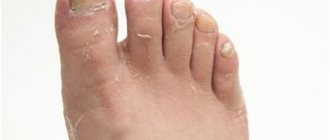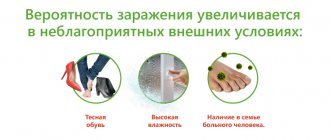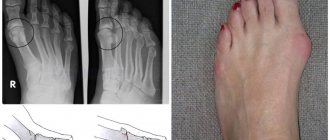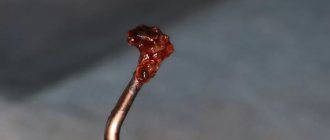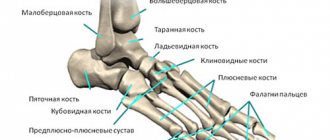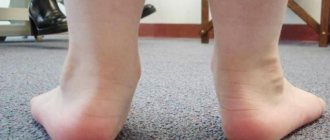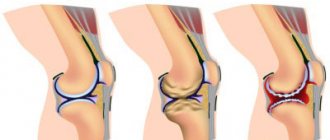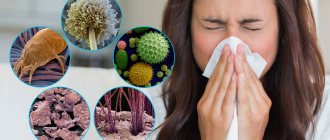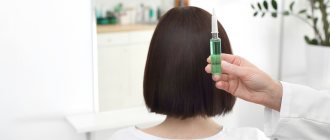We all understand that nail fungus, or onychomycosis, is a serious disease that needs to be treated. However, despite all reasonable arguments, most people, at the first suspicion of a fungus, do not rush to the doctor, get tested and begin treatment. A common excuse: the nail accidentally became deformed and changed color, it will soon go away. Are they right or wrong? What can nail fungus be confused with, is it necessary to treat the fungus, and is it possible to make a diagnosis on your own? Let's try to find answers to these questions together.
Treatment of nail fungus
Symptoms and signs of foot fungus
Signs of the disease depend on the type of pathogen. If the disease occurs due to Trichophyton red, then the symptoms will be as follows:
- the causative agent of the disease begins its activity in the interdigital folds, after which it moves to the sole, and in the absence of treatment it affects the nails, large folds of skin and the epidermis on the palms;
- thickening of the skin;
- dryness of the epidermis;
- cracks;
- peeling of the skin;
- itching and burning;
- white spots and stripes on the nail plate.
If the cause of the pathology is the pathogen Trichophyton interdigitalis, then in this case the following symptoms appear:
- the fungus affects the folds between the toes, as well as the entire foot;
- the epidermis is inflamed;
- peeling of the skin;
- allergies in the form of rashes, redness and itching on the face, body, upper and lower extremities;
- The fungus from the foot spreads to the nails, but affects single plates.
When the pathogen of the genus Candida is active, the following symptoms occur:
- swelling of the soft tissues of the foot;
- redness of the epidermis;
- the location of the fungus is surrounded by a dense layer of the epidermis;
- rashes appear on the skin in the form of blisters, inside of which there is serous fluid, as well as ulcers of small diameter.
signs of mycosis of the feet
Pathogenesis
Photo of fungus on hands
Fungal infections of the hands can be caused by pathogenic fungi: Trichophyton mentagrophytes, Trichophyton rubrum, var. Interdigitale, less often - Epidermophyton floccosum, Candida.
A person can become infected with the fungus if he comes into direct contact with someone who is sick. Infection can also occur through contact with household items, shoes, clothes of the patient, when visiting public places - gyms, baths, etc.
The pathogenic organism penetrates the skin through damage - cracks between the fingers, abrasions. Often cracks between people's fingers occur due to heavy sweating, abrasions, poor drying of hands after washing, etc.
Since the breeding ground for fungi is keratin , they primarily affect areas with a large amount of this protein - skin, nails, hair. In the presence of concomitant diseases, deterioration in the function of the immune system, or the use of certain drugs (antibacterial, cytostatic, corticosteroid), mycosis can become widespread. Endocrine disorders and impaired microcirculation in the area of the distal parts of the upper extremities also play an important role in the development of the disease. This is typical for Raynaud's syndrome and atherosclerosis . The fungus can affect not only external areas, but also internal organs.
How to treat foot fungus?
If this type of mycosis occurs, the doctor prescribes complex treatment. Only a comprehensive impact on the causative agent of the pathology gives a positive result.
Medical preparations ointments creams and oils
Pharmacies offer many medications to treat the disease. Below are the most effective ones:
- Lamisil. Antifungal cream, the main active ingredient of which is terbinafine. The drug helps to get rid of even an old disease. Used for therapeutic and prophylactic purposes.
- Levomekol. Release form: ointment. Levomekol is recommended for use in various forms of mycosis, as well as for the treatment of certain types of lichen. The product destroys the pathogen, promotes the restoration of damaged soft and bone tissue, and also improves the activity of the sebaceous glands.
- Stop asset. It is an oil that has an antifungal effect. The composition contains only natural ingredients, which makes the product safe for health. The product destroys harmful microorganisms, relieves itching and flaking, and also helps relieve swelling of soft tissues.
- Exoderil. An antifungal agent whose main active ingredient is naftifine hydrochloride. Release form: ointment and drops. The drug is prescribed both in the initial stages of the disease and in the old form of the pathology.
- Clotrimazole. Available in ointment form. The drug helps get rid of various types of mycosis. To enhance the effect of the drug, it is also recommended to take tablets of the same series.
Antifungal tablets
The treatment regimen for the pathology also includes taking antifungal drugs orally. Typically, the following drugs are prescribed for the treatment of the disease:
Fluconazole. Tablets with antifungal properties that block the activity of the pathogen. The dosage and duration of therapy are prescribed by the doctor, based on the type of pathogen and the subjective characteristics of the patient. Stop Fungus (Biopag D). The main active component of the product is guanidine. The drug is intended for oral administration. The dosage is selected by the doctor, the therapeutic course is 7 days.
Effective folk remedies
To increase the effectiveness of treating foot fungus at home, it is recommended to use alternative medicine products. Such drugs cannot be used for independent therapy. The drugs only enhance the effect of pharmaceutical products.
Infusion based on calendula
To prepare such a product, you need the following components:
- calendula flowers – 1 cup;
- water – 1 glass.
The plant is poured with boiling water, the container is closed with a lid and left for half an hour. Next, the infusion is filtered. The drug is used to treat the affected epidermis before a night's rest. The product is not wiped off or washed off. The period of therapy is until recovery.
Garlic ointment
To prepare the product take:
- chopped garlic – 1 part;
- butter – 1 part.
The products are mixed and placed in a glass jar with a lid. The product is stored in the refrigerator. The product is applied to the epidermis before night rest. After this, cotton socks are put on your feet, and the compress is kept until the morning. After this, the feet are rinsed with water.
Hardware treatment of fungi
If classical treatment for foot fungus, carried out at home, does not bring the desired result, laser therapy is prescribed. The essence of the manipulation is laser treatment of damaged epidermis and nail plates. As a result of this, the causative agent of the disease dies. To increase the effectiveness of laser therapy, the doctor may prescribe antifungal drugs for oral and topical use.
foot fungus
Treatment
Particular attention should be paid to careful treatment of lesions.
The patient should take daily warm foot baths with potassium permanganate. In this case, it is necessary to remove the crusts, open the blisters, cut off the fringe along the edges of the erosions, as well as the covers of the festering blisters. After the bath, wet-dry bandages or lotions are applied with an aqueous solution of copper (0.1%) and zinc sulfates (0.4%) or with a 1% aqueous solution of resorcinol. After the weeping stops, dermozolon, mycozolon are used, and then alcohol fungicidal solutions, Castellani paint, and finally, if necessary, fungicidal pastes and ointments.
The effectiveness of treatment depends not so much on the choice of pharmacological drug, but on their correct, consistent use in accordance with the nature of the inflammatory reaction.
Fungicidal treatment is carried out until the fungal test results are negative.
Anti-relapse treatment carried out within a month after the elimination of lesions is extremely important - wiping the skin of the feet with 2% salicylic or 1% thymol alcohol and dusting with 10% boron powder. For the same purpose, it is necessary to thoroughly wipe the inner surface of the shoes with a solution of formaldehyde, wrap them in an airtight fabric for 2 days, then ventilate and dry them, and socks and stockings for 10 minutes. boil.
When athlete's foot is complicated by pyococcal infection, antibiotics are prescribed - methicillin, cephaloridine, oleandomycin, metacycline, erythromycin. The patient must remain in bed.
Prevention
To avoid the occurrence of the disease, it is recommended to adhere to the following preventive measures:
- in public places, which include a swimming pool, sauna and bathhouse, do not walk without special shoes; observe the rules of personal hygiene;
- do not use other people’s towels to dry your feet and do not wear other people’s shoes;
- regularly take multivitamin complexes to strengthen the immune system and increase the protective forces of the epidermis;
- wear only comfortable shoes made from natural materials and regularly ventilate, dry them, and treat them with antifungal agents.
Classification
Fungal pathogenic organisms are divided into several groups:
- Anthropophilic - they only affect people.
- Zoophilic - affects exclusively animals.
- Zooanthropphilic - affects all representatives of the fauna.
In medicine, fungal diseases are divided into five groups:
- Keratomycosis (trichosporia nodosum, lichen versicolor ).
- Dermatomycosis (athlete's foot, athlete's foot, rubromycosis, trichophytosis , microsporia).
- Candidiasis (superficial candidiasis, chronic generalized candidiasis, visceral candidiasis)
- Deep mycoses (blastomycosis, histoplasmosis, sporotrichosis, coccidioidosis, etc.).
- Pseudomycosis (superficial and deep pseudomycosis).
What is foot fungus
Foot fungus is a form of mycosis in which the causative agent of the pathology affects the epidermis of the foot, and in the absence of qualified and timely therapy, spreads to the nails, as well as to other parts of the body. The occurrence of pathology is provoked by infection of the epidermis with various types of fungus.
When certain conditions are created, pathogens can parasitize inside the body, as well as on the skin and nail plates. As a result of the activity of these harmful microorganisms, local and systemic pathologies arise.
The disease is characterized by a structural change in the epidermis. The symptoms of the disease depend on the type of fungus. Common symptoms are itching of the epidermis, peeling, and keratinization of the skin.
At the first signs of foot fungus, it is recommended to consult a specialist. Timely and correct therapy will help get rid of the pathology in a short period.
General information
Every day a person is faced with many factors that can negatively affect his health.
Not everyone realizes that simple actions, such as visiting a sauna or getting a manicure in a salon, can lead to a fungal infection, which can subsequently cause numerous problems. Fungus on the hands - this is how this disease is usually called in everyday life - or mycosis very often develops precisely because of a banal failure to comply with the rules of personal hygiene and a person’s inattention. It is important to understand that fungus on the hands, as in other places on the body, spreads very quickly. Therefore, if alarming symptoms appear in both adults and children, you should definitely consult a doctor and follow the treatment regimen that he prescribes. How exactly to treat mycosis on the hands and how to recognize this disease will be discussed in this article.
Diet
Antifungal Diet
- Efficacy: no data
- Terms: 3-6 months
- Cost of products: 1500-1600 rubles. in Week
In the process of treating a fungal disease, doctors recommend following some recommendations. Proper nutrition promotes a speedy recovery and helps fight fungal infections. The antifungal diet requires the following rules:
- Do not consume foods that contain yeast.
- Minimize, or better yet completely eliminate, the consumption of sweets, since carbohydrates are a breeding ground for fungus.
- The use of dishes made by fermentation (kvass, etc.) is contraindicated.
- It is recommended to eat freshly prepared food and consume as many raw vegetables and fruits as possible. It is important to introduce more greens, carrot and orange juice into your diet.
- It is prohibited to consume alcohol.
- During the treatment process, it is important to consume as much fermented milk products as possible in order to normalize intestinal functions.
- It is recommended to drink rosehip decoction, green tea, herbal teas, and mineral water. You need to drink as much fluid as possible.
Causes
A fungus on the skin of the hands may appear if infection occurs from an infected person. Most often, fungus on the skin of the hands develops some time after a person has visited a public sauna, swimming pool, gym, or nail salon. In fact, fungal infections of the hands are very common, because throughout the day a person goes to different places and touches a variety of objects.
Photo of skin fungus on hands
Factors contributing to fungal infection and its spread are:
- The presence of injuries on the hands - microcracks, abrasions.
- A number of diseases - diabetes mellitus , endocrine disorders, inflammatory diseases, etc.
